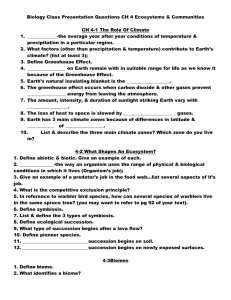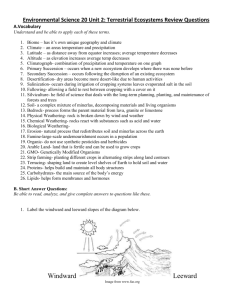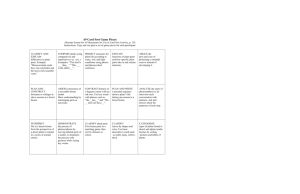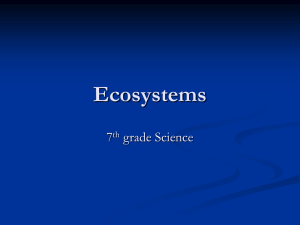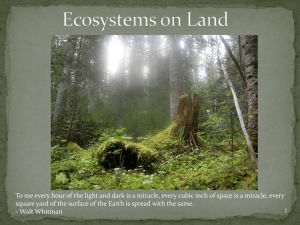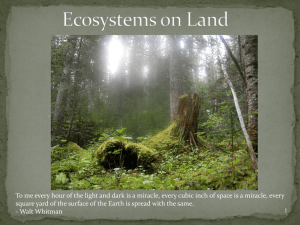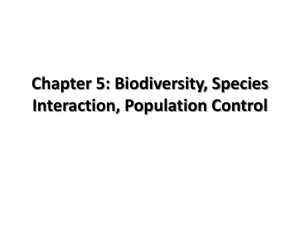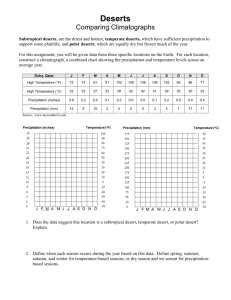Environmental Science: Biomes & Land Ecosystems Study Guide
advertisement
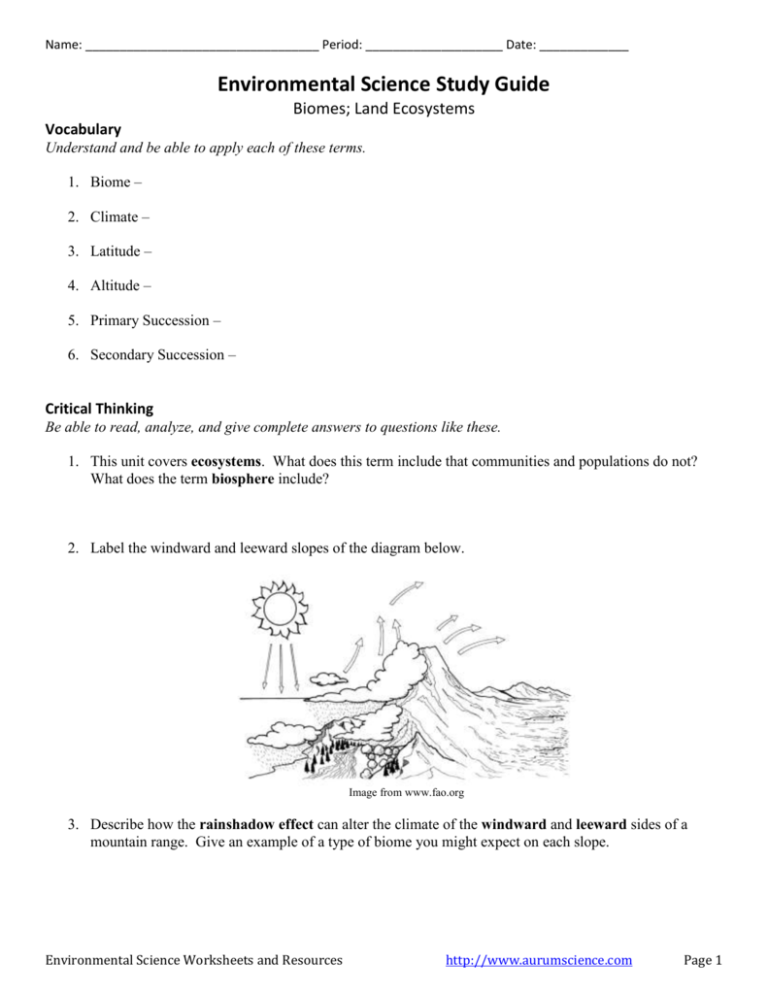
Name: __________________________________ Period: ____________________ Date: _____________ Environmental Science Study Guide Biomes; Land Ecosystems Vocabulary Understand and be able to apply each of these terms. 1. Biome – 2. Climate – 3. Latitude – 4. Altitude – 5. Primary Succession – 6. Secondary Succession – Critical Thinking Be able to read, analyze, and give complete answers to questions like these. 1. This unit covers ecosystems. What does this term include that communities and populations do not? What does the term biosphere include? 2. Label the windward and leeward slopes of the diagram below. Image from www.fao.org 3. Describe how the rainshadow effect can alter the climate of the windward and leeward sides of a mountain range. Give an example of a type of biome you might expect on each slope. Environmental Science Worksheets and Resources http://www.aurumscience.com Page 1 4. What effect does living near a large ocean or lake have on average air temperatures? 5. Give an example each of a location where primary succession and secondary succession could occur. 6. Why is primary succession so much slower than secondary succession? 7. Complete this summary chart of the land-based ecosystems. Precipitation (High, Low, or Seasonal) Subtropical Desert Coastal Desert Rainshadow Desert Temperate Desert Polar Desert Avg. Temperature (High, Low, or Seasonal) Important Abiotic Factors Precipitation (High, Low, or Seasonal) Savanna Prairie Tundra Tropical Rainforest Deciduous Forest Boreal Forest Temperate Rainforest Avg. Temperature (High, Low, or Seasonal) Important Abiotic Factors Label each of the following areas on the map: The equator (0°) The North Pole (90°N) The South Pole (90°S) Shade in and label each of the following areas on the map above. (These are good to know for reference but you don’t need to memorize these exact latitudes for the test). The tropics (23°N to 23°S). The subtropics (23°N to 38°N and 23°S to 38°S). The temperate zone (38°N to 66°N and 38°S to 66°S) The Arctic Circle (66°N) The Antarctic Circle (66°S) 8. Which zone would you expect to find each of the following ecosystems? a. Deserts: b. Savanna: c. Jungles: d. Tundra: e. Polar Desert: f. Deciduous Forest: g. Boreal Forest or Taiga: Climatograph Use the data provided to construct a climatograph. Temperature should be displayed as a line graph and precipitation as a bar graph. Month January Precipitation (inches) 0.2 Temperature (°F) -6 February 0.5 -2 March 0.8 -7 April 0.9 28 May 1.1 45 June 1.6 52 July 1.9 50 August 2.4 48 September 1.8 37 October 0.7 18 November 0.5 9 December 0.2 -2 What type of biome do you believe this is? Give specific observations from your graph to justify this answer.

